#zelda meta
Text
A Record of the Calamity
This collection of meta essays explores the worldbuilding and cultural background of Hyrule and its inhabitants during the timeline of Breath of the Wild and Tears of the Kingdom.
Ninja Lore in Breath of the Wild
On the historical precedents of the Sheikah, the origins of the names "Yiga" and "Kohga," and how the culture of historical ninja is referenced in the story and setting of Breath of the Wild.
Governance in Hyrule
On the nature and questionable necessity of the Hyrulean monarchy in comparison with other systems of governance in Hyrule.
Zelda and the Calamity
On how Zelda's repressed emotions may have surfaced in a tragic explosion of chaotic power.
Ganondorf as an Agent of Change
On Ganondorf’s role as the villain of a heroic fantasy, the existential challenge he poses to Hyrule, and the necessity of disruption to an otherwise closed system.
Ganondorf’s Design in Tears of the Kingdom
On the Japanese cultural references incorporated into Ganondorf’s visual design.
The Two Kings in Tears of the Kingdom
On the fantasies of Japanese cultural identity represented by Rauru and Ganondorf, and why the power structures associated with the two kings are disavowed by Zelda.
#Legend of Zelda#Breath of the Wild#Tears of the Kingdom#Princess Zelda#Ganondorf#Rauru#Yiga Clan#Sheikah#Zelda meta
267 notes
·
View notes
Text
THE GERUDO POST
(aka an attempt at a critique of how gerudos were handled in BotW and before)

Oh no. TOTK being right around the corner, it might finally be time for the Gerudo Post.
(aka half of the reason why I made a Zelda sideblog in the first place)
So I want to preface all of this by saying that, as you could probably tell already, I’ve always adored the gerudos. They have fascinated my small child brain when I was 7; then the obsession made its comeback when I was 14, and now, here we are, almost 28, and I’m still thinking about the gerudos. I think they might be among my favorite fictional cultures for their potential and their understated storyline. I guess growing up in a very Arabic neighborhood, coupled with being bi-culturally latinx (?? does Brazil count?? you tell me), also always made them feel like home to me –especially when I was very young and there was not a lot of cool female representation flying around that managed to involve fiercely independent PoC women, flaws and teeth included.
This whole weird-essay-thing tries to do two things. First: analyze the place gerudos have occupied in the series, their initial problematisms and their subtextual narrative arc during the Myth Era coupled with their relationship to Ganondorf. Second: tiptoe to Breath of the Wild and poke it with a stick to see what happens –and in doing that, explain why I believe a lot of their characterization was defanged in service of smoothing their past with the hylians instead of deepening the culture on its own terms, and why I’m a little apprehensive about what that might mean for TotK even though I adore seeing the best girls at it again.
Those are the uhh terms of service??
And now, we must go back to 1998.
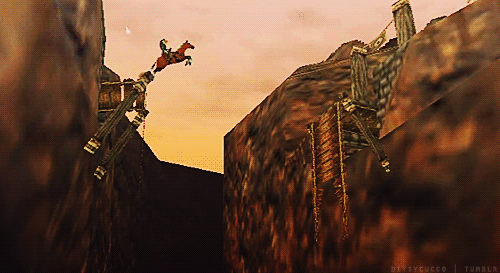
OCARINA OF TIME ERA
There’s so many things about the gerudos that are noteworthy and rich, and they’ve made for a complex piece of Zelda lore ever since their introduction –and when I say complex, I don’t 100% mean it as praise. The very racially charged decisions made about their inclusion have been discussed at length by the fandom, especially when it comes to orientalist and Islamophobic tropes being deployed pretty thoughtlessly in Ocarina of Time (their sigil being literally a crescent moon and star originally, the parallels are pretty obviously there).
We’re talking about a band of amazon-like, big-nosed brown women from the desert ruled by a single Scary Evil Man born once every hundred years hellbent on conquering Hyrule who they apparently worship like a god, characterized primarily as thieves, decked in jewelry and orientalist-inspired harem/belly-dancing clothing, hostile to the white good guys of Hyrule (especially men), unblessed by the Goddesses and so deprived of elongated ears (this is true for OoT –we’ll come back to that), also known as a demon tribe with their deity straight-out described as evil-looking by Navi (on my way to cancel you on twitter Navi you watch out), and secretly led by evil twin witches who can turn into a single seductress and, as two mothers, raised their Scary Evil Guy king who happens to basically be the devil.
In so few words, gerudos are the future that liberals want.

It’s worth notice, also, that Ganondorf’s characterization in this game is… kind of relentlessly uncomfortable to play through, especially before the 7 year skip. The utter assumption of depraved and evil intents from every character surrounded by dialogue that does little to hide its biases in spite of having generally very little proof to back them up –even though, in the game’s context, every character is correct to call his eyes evil and the darkness of his skin a moral judgment in on itself. The scene where Zelda demands that we believe her conclusion that the sole and only brown guy in the entire kingdom is evil and will do harm, and the game straight out refuses to progress until we concede that her dreams are prophetic and that this man must be stopped at any cost even though she has no more proof than her discomfort… hits different on replay.
I’m restating all of this not to pretend I’m making a novel and thought-provoking point, but to bounce back on a tumblr post I saw a while back (that I can’t find anymore!! I’ll link it if I find it again) –and so express what it is that gripped me with the gerudos in spite of their pretty damning depiction… and actually maybe thanks to it.
There’s a surprising amount of texture to Ocarina of Time’s worldbuilding that exists folded within the things introduced and left hanging, or in its subtext –and whether on purpose or not, I believe it is why people keep coming back to this iteration of Hyrule.
What was that about the king of Hyrule unifying a war-torn country? Why did the gerudos break the bridge connecting them to the rest of the kingdom during the 7 year timeskip while still worshiping Ganondorf, and why are the carpenters trying to rebuild it against their apparent wishes? What was that about gerudos imprisoning hylian men trying to force entry into their lands? What was that about the secret death torture chambers right next to the Royal Family’s tomb and connected to the race of people who were, apparently, born to serve them?
Nothing? Oh okay… okay… okay….
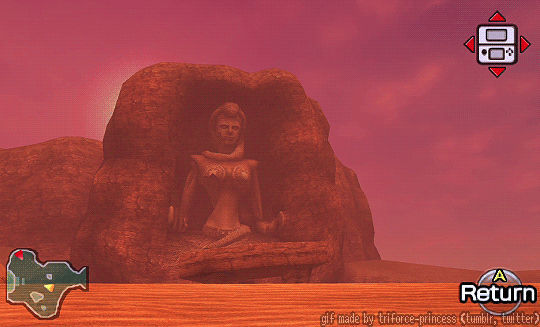
The same can be said about this strange depiction of this hostile tribe, consistently described as wicked yet suddenly friendly once you prove you deserve their respect once you... defeat them, so you now have joined them? Ocarina of Time isn’t very consistent when it comes to characterizing them as their occupation (thieves) or as a proper culture, with a king and a strange system of rulership that seem to involve at least 5 people: Ganondorf, the Twinrova, Nabooru and the unnamed random woman who decides you’re now part of the gerudos because you slashed enough of them with your sword and hookshot, which, uhh ok.
They’re but a ragtag and negligible group when discussed next to gorons and zoras and hylians, but they also clearly have their own religion and at least a 400-hundred years old history (probably far longer than this) and hints of a written language of their own. I’m not sure the game itself knows what it wants them to be, beyond: intimidating and hot and cool, but also wicked and, because of Ganondorf and the way you barge in their forbidden fortress (heh) with the explicit intent to dismantle their king, in apparent need to be saved from themselves.
Speaking of rulership and the Spirit Temple, let’s have a quick tangent about Nabooru: I always found her characterization when meeting with Child Link pretty strange. I refuse to mention the promised reward, which feeds into everything orientalist mentioned above, but I always found her moral compass so extremely convoluted for someone coming from gerudo culture. Nabooru says that, despite being a cool thief herself, she resents Ganondorf for killing people as well as stealing from women and children. Stealing... from women. Nabooru. Why are you this pressed that he steals from women!!! This feels so out of place, that the only girl of that hostile culture that betrays her king and befriends you, is the one that upholds moral values that only a hylian could possibly hold.
Either way: the strange unquestioned contempt of the game for them as a culture, mixed with the occasional bouts of heart, friendliness and badassery, makes it hard not to consider their depiction as pretty biased in favor of the hylians finding them at once exotic, scary and exciting, and could hide a more complex reality you might only get one side of –especially when you know there were originally plans for Ganondorf’s character to be more gray and motivated than what the campy final version ended up being. To be blunt: even in the context of a game for children, and maybe because of that fact, it all reads like a reductionist and imperialist/colonialist reading of a more complex situation.
This might seem like A Lot coming from a game where the actual game writing can be this overall flimsy and simplistic due to the standards of the time (it’s rough, it's so rough). But I would have never dwelt on that thought about a little children’s game if not for the mainline entries that came soon after, because... ooo boy.
The sense you’re not getting the whole story was certainly not helped by the introduction of Wind Waker Ganondorf, and the chilling emptiness of Gerudo Desert in Twilight Princess.

AFTER THE TIMELINE SPLIT
(I’m skipping Majora’s Mask, not because I dislike them in the game or think they’re not worth talking about, but because it’s a parallel universe and they’re never even called gerudos and their reality seems extremely different from their sisters in Hyrule so I think it’s okay to call them tangential and not dive too deep in this particular depiction)
Here’s something I want to highlight about gerudos and how they were characterized before BotW came along: their absence. Not only their physical absence, the lack of any gerudo character that calls themselves gerudo, but their absence from the text itself.
It’s not that Wind Waker and Twilight Princess retroactively scratch them off existence: we can clearly see Nabooru’s stained glass art in WW as well as recognize them being mentioned in Ganondorf’s final boss soliloquy, and WELL there’s quite a lot to say about their imprint over the world of TP. They are there –or at least they... were there. But nobody ever talks about what happened.
In Wind Waker, there was the deluge. It’s assumed lots of people died then, and those who survived scattered across the Great Sea. Are they sealed under the waves? Have they drowned? Is Jolene, Linebeck’s ex-girlfriend in Phantom Hourglass, a distant relative of one of the rare survivors? It’s unclear, beyond the fact that Ganondorf is the only living gerudo we see in this entire branch of the Timeline split.
In Twilight Princess, the desert which bares their name is empty. The hylians never mention that it used to be the name of a tribe: they’re not even named when Ganondorf is introduced for the first time, reduced once again to a mere band of thieves. We learn his plans to steal the Triforce in OoT were foiled, and that he may have turned to war. Then he lost the war, and was executed in Arbiter’s Ground: a strange structure in the desert, a mixture between a temple, a prison and a coliseum. What looks like gerudo writing coexists with hylian symbols, which often look much fresher. This dungeon is the Shadow Temple of TP: a prison hosting the worst criminals the kingdom has ever known, now haunted and cursed. Besides the locations, the only character that vaguely look gerudo in the entire game besides Ganondorf is Telma, a character with pointed ears that never seems to identify as anything but a hylian. What happened? Who’s to say. Nobody ever says anything. Not even Ganondorf bothers to mention them the way he did in WW –and though the game’s story is quite focused on another exiled tribe seeking revenge and dominion over Hyrule as retribution, the parallel is never explicitly drawn. So who’s to say what happened there. Who’s to say.
And in A Link to the Past and the games forward? The only mention of other gerudo characters are Koume and Kotake, resurrecting their son in the Oracles games through their own sacrifice and failing to bring anything back but a monstrosity incapable of making conscious decisions. Granted, most games in that extremely weird Fallen Timeline predate OoT and therefore had yet to make gerudos up at all. Still: canonically, between the gap of OoT and ALLTP, whatever it may be, gerudos disappeared here as well.
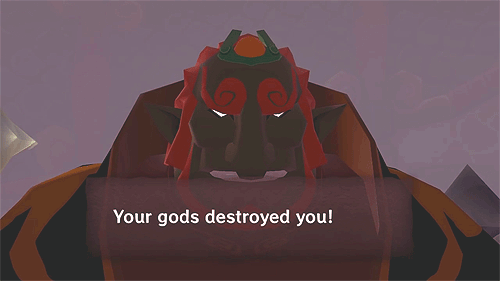
I think there’s something subtle and a little heartbreaking about the fact that no matter what Ganondorf does, the gerudos always end up dying out. His yearning for Hyrule, its gentler wind and the Triforce blessing its lands always costs him the kingdom that he does have already.
Now, does he care? A lot of people would argue that he doesn’t, that he used them like pawns for his own ambition and saw them as servants more-so than sisters, and I wouldn’t be surprised if it was Nintendo’s official opinion, but… One very powerful thing about most of Ganondorf’s incarnations (focusing on the human ones) is that he never seems to reject his cultural heritage. They could have gone for him wearing more kingly hylian stuff given the whole underlying theme of envy and pride surrounding his character, but never once does he try to look more hylian, beyond the ear situation that seems to be tied to the Triforce of Power? Either way: he is gerudo. Several of his outfits reference his mothers, as well as general gerudo patterning and jewelry. His heritage is something he proudly displays, even hundred of years in the future when there is no one left to remember what it means but him. I think it’s a very potent piece of characterization, an arc that crosses over multiple game and says something pretty intense about this character’s fate and his inherent destructiveness over the things he touches –starting with the Triforce, all the way up to his very own body and mind. His mental breakdown by the end of Wind Waker, when the king of Hyrule himself forces him to give up on the thing he sacrificed everything for, takes a new kind of weight with the whole picture taken into account.
(not to excuse genocide or general egomania-fueled madness and violence, but one thing doesn’t mean the other isn’t also relevant)

Regardless of whether this is a tragedy for Ganondorf as their uhh complete failure of a king, honestly, it is undeniably a tragedy for the gerudos themselves: a once-in-a-lifetime joyful event turned into a never-ending nightmare from which there seems to be no escape, their legacy now condemned to fade to black, leaving nothing behind but a demon boar forever laying ruin upon the world.
One may say I’m taking on the bleakest explication for the gerudos’ absence when there could be others. It’s true! Perhaps the gerudos are just chilling off-screen, completely fine, not interested in whatever is happening in the kingdom nearby and their disaster child having yet another temper tantrum about not being the Goddesses’ favorite boy. It’s possible! But regardless, what little elements we do possess as players doesn’t seem to support this, even if it remains possible –and regardless of actual gerudo lives, gerudo culture is definitively a goner in every single timeline.
Even if they did survive... Hyrule still won its unification war.
(I won’t mention Skyward Sword as they are not really a thing there, except for a butterfly that seems to suggest the Gerudo Province was a thing before the gerudo people –I don’t know what to do with this honestly– and the whole Groose situation, which, I’m not sure what to make of either beyond the fact that he may have gotten cursed by opposing Demise? And then went on to start the gerudo tribe, which ended up being an all-women group for some reason? Maybe? It’s not confirmed? I feel like it’s more of a fun tidbit than a central piece of the gerudo puzzle, so I’ll leave it there like I would a cool rock I brought back from a walk and that I don’t know where to put in my house)
Then, Breath of the Wild happened and changed things.
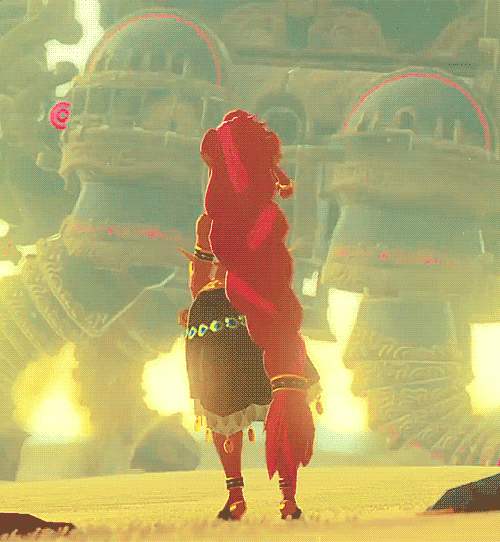
BREATH OF THE WILD
(Additional short note, but: while I won’t mention Four Swords Adventure, since it’s a weird one that almost nobody has played and severely messes with the Timeline, we kind of see the beginnings of what is about to happen in Breath of the Wild in this game –gerudos coming back without much explanation, then distancing themselves from Ganondorf to become friends with hylians because he was too hungry for power and now they are nice and have good reputation because they are our friendsss)
I was actually so happy to learn gerudos were making a comeback in a mainline Zelda game, and this got me more excited about Breath of the Wild than basically anything else the game involved. And getting to explore the Desert once again, meeting this new batch of impossibly tall buff girls, getting more about their language and their culture, Riju and the rest of the little girls are adorable, the grandmas are so cool, the sand seals??? sign me the fuck up??? And above it all, hanging around Gerudo Town at night and feeling as warm and cozy as little me liked to imagine how freeing it would feel, to stay there and watch the desert behind the safety of their walls in OoT… This was great. I loved it.
It was a huge compensation for the criticism I’m about to make, but did leave me with… questions regarding how their culture was going to be handled moving forward.
I’ll start with something small yet deeply revelatory, then work my way from there.
So... gerudos’ ears are pointy now.
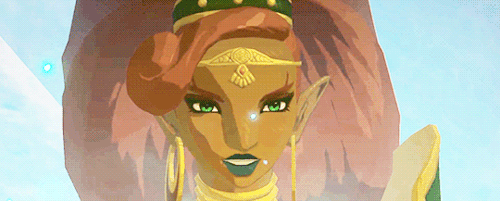
This is pretty significant. Lore-wise, it’s been said that the elongated ears of hylians are there so they can better hear the voices of the gods. It’s considered a sign of holiness in-universe. There's a bunch of really thoughtful analysis on tumblr over that whole Ganondorf ear situation, which is a mess but also very interesting, but the short answer is: I think the absence of pointy ears was a clear design choice to originally signify them as Less Good. Even when Ganondorf gets pointier ears, they never get as long as hylians’. Worth noting: not every non-gerudo character has pointy ears: gorons, zoras and ritos (among others) do not possess this trait, and there are even some humans that have regular rounded ears in the series –though they always seem to be of lesser relevance, if not downright peasants in Twilight Princess. Pointy ears always tended to implied a strict hierarchy in the series: basically, the more pointy, the more Protagonist you become.
(also their eyes becoming green instead of the traditional yellow/golden, which looks more wicked and demonic --and cooler also tbh)
The pointy ears imply two things. From within the game, this could be interpreted in two ways: either that gerudos… converted, for a lack of a better term, and are now considered holy through their worship of the Golden Goddesses and/or Hylia, or that their mingling with hylians through tens of thousands of years had them acquiring this trait out of sheer genetic override (though they have kept their mostly-women birth rates, their big nose, darker skin –for the most part– and red hair). Probably a healthy mixture of both. Design-wise, it signifies something quite simple to the player: they are on hylians’ side now. They are good guys. We can trust them, even if they still have a little spice in them. They aligned themselves with us and against Ganon in all of its manifestations (even if he’s but an angry ghastly pig being parasitic to everything it touches in this iteration). They are on the side of Good, definitively, and will fight evil by our side.
On that note, I think it’s worth bringing out another major change from their initial iteration, which is their overt friendship with Hyrule as a whole, and with the Royal Family in particular. Despite not allowing any voe inside their walls (we’ll come back to this), their relationship with hylians is pretty neat. They have booming trade roads, travel and meet with the rest of the cultures, and are fierce enemies with the Yiga clan, who are renowned for being huge Calamity Ganon supporters. The tables certainly have turned. I want to bring out, in particular, Urbosa’s friendship with the queen and her role as the cool aunt taking care of Zelda and protecting her from evil (to be noted: I am not familiar with Age of Calamity so if I’m mischaracterizing her in any way, please let me know). The gerudo sense of sisterhood has been extended to the royals they used to fight against. I would go on and say the cultures peacefully coexist, but I think that what we’re looking at here is a case of vassal behavior, just like we used to have from zoras (in the non-Fallen Timelines) and gorons. This is a huge departure from gerudos being openly rejecting of Hylian culture in their initial iteration, and something that is worth returning to later.

Okay. Now it’s time to mention the weird obsession BotW gerudos have with romance. I didn’t take notice of my issues with their writing until I realized how prevalent of a theme that was. Now, the reason given for gerudos to refuse entry to males (of every race) has much more to do with preventing young gerudos to make mistakes than anything else, and is actively being put into question by the younger generations –which would make sense. But the amount of NPCs that either lament their lack of match, talk about their husbands (because they marry now apparently) or are invested in romance, and a very limited understanding of romance at that (heterosexual, closed, etc), makes for much more of the population that I initially expected. There’s no mention of what’s going on with their males, if there are new males being born and either exiled or abandoned, or if Ganondorf being technically still alive have have cut them off male heirs. Either way: no more kings, only girlbosses chiefs.
To have the gerudos so interconnected with Hyrule, not only through trade but through extremely coded romance where they have to make themselves palatable to a future male partner and enforce fidelity, was… a choice. The extremely brief and skippable mention of gerudos sometimes going to Castle Town in search for boyfriends in OoT became half of their personality traits in this game. We went from a race that was fiercely independent and mocking of the unworthy men who tried to mingle with them, to… this. Now I’m not saying some of the sidequests aren’t cute, or that I didn’t like the wedding, or that the grandma near the abandoned statue of Hylia (so she was worshipped at some point) clocking us and talking about her love life wasn’t one of my favorite gerudo conversations. I’m saying that the vibes have definitively changed. For the better? I’m not sure.
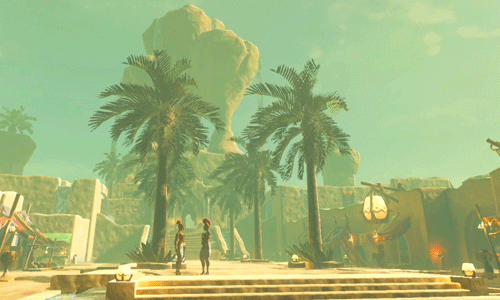
I once stumbled upon an article that said that Breath of the Wild gerudos were a huge improvement compared to their original introduction, because they were no longer presented as evil and hostile thieves groveling at the boot of a single man, but as a full culture allied with the protagonist and actively involved in the story, while still getting their Cool Girl Badass moment (again can’t find it anymore, I’ll link it if I stumble upon it again). I see where this comes from, but I honestly can’t help but consider it a reading that assumes something pretty major (though through no fault of their own, as the games tend to hammer this down as hard as they can), and that being hylians as the unquestioned anchor of Good.
Which, in spite of what the games want me to believe, I… feel uncomfortable taking at face value.
To me, regarding how gerudos are being incorporated in that goodie narrative, this is kind of a case of surface-level feminism trumping over colonialist/imperialist concerns. It becomes more important to perform the aesthetics of being cool and friendly and independent than scratching at any deeper problem that would risk making people uncomfortable. This is kind of Green Skin Ganon all over again: oh wait, isn’t it a little icky to have the evil bad guy being brown while faced by the most aryan-looking ass heroes of all time? Okay, then let’s take the brown guy and make his skin green so we don’t have to feel bad anymore that the conflict has racial undertones!! Solved!! There’s nothing questionable about changing a PoC's features to make it more monstrous and less human, right?
To me, it’s kind of the coward option: instead of accepting the messy reality those initial choices created (and their interesting nuances if taken at face value), let’s just… rewrite the PoC culture’s history to make it feel less uncomfortable for the white heroes. In many ways, it is an extension of what hylians have always done: scrubbing the weird and messy things about the past and shoving them deep down into the spooky well and far into the desert prison and away in alternate hellish dimensions, and then make up a very simple story where they get to feel good about themselves –except this time, it’s the fabric of the games, the literal reality, bending backward to make it happen. Which, in my opinion, makes it much worse than before. Now, there’s no conversation. The fabric of reality is changing their own history so that there is nothing to discuss anymore. Ganondorf was always evil incarnate. He never had any point. It was always 100% his own fault, his own hubris, his own fated wickedness. He was always demonic (and green, very important –having a flashback to people on twitter accusing artists restoring the TotK green skin to the original brown of wanting to make Ganondorf black, and like….. how do I put it gently…..)
And, above all else: gerudo are to distance themselves from his legacy so they can stay in the club of the Good and Just and Holy.
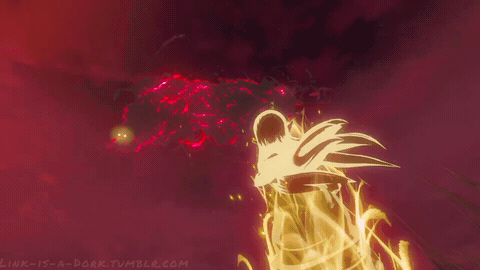
Because here’s the messy thing: as much as I love seeing the gerudos again in Breath of the Wild and as much I love for them to have survived the Era of Myth (??? somehow ???), this… kind of changes Ganondorf’s character arc. No longer do we have the story of a king who wanted more, either for his people, for himself or both, and led his culture to its destruction in his search for absolute Power, while remaining ironically incapable of maintaining what little he already had. This starts from him kneeling to the king of Hyrule in OoT and leads to the deluge, Arbiter’s Ground, his own mothers dying for the sake of his failed resurrection. Breath of the Wild changes this: now, the gerudo were apparently fine without him? They apparently did their own thing and became suddenly and inexplicably disconnected from his actions? I know it’s kind of implied they side with hylians at the end of OoT, but it’s honestly never really explored why they would cheer for the death of their king while never seeming to resent him before except for Nabooru –there are mentions of brainwashing for those who resist him (as well as “other groups in the desert”, tho they are never mentioned again), but it’s hardly a proper plot point for the majority of the tribe, aaaand they still die by Wind Waker in the Adult Timeline, in spite of their potential alliegance…
(again, this shift towards submitting to Hyrule actually started with Four Swords Adventure, getting crisper with each iteration)
There used to be this polite blur regarding Ganondorf’s relationship to them, how much he used them and how much he acted in their name (with arguments for both sides), and I think this messy and debatable question mark was one of the most compelling aspects of his character. Gerudos rejecting their relationship at a near-cosmic, reality-bending level, removes a huge layer of complexity to both parties… all for the benefit of making hylians come out cleaner out of this whole exchange, their moral grayness barely a whisper in the distance.
I’ll kind of go on the record and say that I suspect the addition of Demise to the canon to serve a similar purpose (at least in part): if Ganondorf becomes but the manifestation of a demonic curse, and is no longer an extremely messy character brimming with agency and drive, forcing the heavens to reckon with said agency in a way he was never meant to access, born from a complex set of circumstances from which we clearly get only a limited and biased perspective, then it becomes extremely clear that he’s a Bad in a way that isn’t worth exploring further. Even if he does have some points, he is a Bad. It’s what matters most. Not to say I even hate what this angle can bring to the table or that I want him to become Good (I don’t –I’ll talk more about why I dislike most takes on him being a helpless victim to the curse), but once again, who benefits from adding another Unquestionned Baddie to the equation to rest upon? Not him, and not the gerudos, that’s for sure.
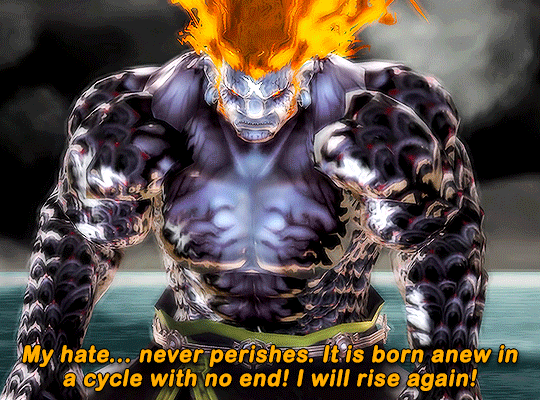
So. Why did I, me, personally, like the gerudos in the first place?
Beyond the inherent coolness factor of their culture and the fascinating mysteries of what is merely suggested, I think… I think I loved gerudos because we were obvious outsiders. Because their rejection of Hylian culture was so sharp and extreme, their value system so different, and their writing, their religion, their relationship to power and hierarchy and worth wanted nothing to do with hylians. They didn’t need hylians, beyond them having potential resources to steal. In fact, the threat of hylians influencing their culture was such that the entry to the Fortress was forbidden to everyone (I don’t think men were ever singled out, by the way, even though they are mocked relentlessly). I think there was something inherently hopeful about this semi-matriarchy resisting the outside world, and especially its notions of what girls were meant to be –it was 1998, and every other girl character in OoT, besides Impa and Sheik that?? is another can of worms entirely, is either helpless or someone to save. For them to reject this narrow vision of femininity was, in my opinion, much more radical than what we got in BotW. Less nuanced, more problematic perhaps? But also much more powerful. Gerudo Valley is home, not to a town, but a Fortress.
Hylians were worth being resisted.
In Breath of the Wild, their refusal to let men enter their town is kind of boiled down to a fading tradition over-focused on romance, a meek little game of chase. Their entire goal seems to be finding a hylian to settle down with. Say what you will about the single man and the many girls (never explored and completely open-ended in its implications, btw), but at least it wasn’t… that. At least it opened the way for different ways for people to exist and imagine culture and civilization, outside of the heterosexual couple, the christian-infused patriarchy and its trickling down implications. What I want to say is: let my girls tell hylians they ain’t shit!! That they aren’t the end all be all of reality! This is what made gerudos so compelling in the first place! Where is that bite now? Where is that self-definition?
It’s gone, because hylians need to be Good. So we tee-hee at the creep running laps around the town, we disguise ourselves to breach their trust and infiltrate their town (though there is nuance to be had there, gender be complicated etc), we watch them pine after shitty dudes and take classes to become the perfect approachable woman and make love soups with ?? strange ingredients honestly, and we witness them get very friendly with the Royal Family they used to conspire against, dying to protect the princess against the manifestation of their ancient king reduced to a raving puddle of Bad Boar.
Hyrule, unified against him.
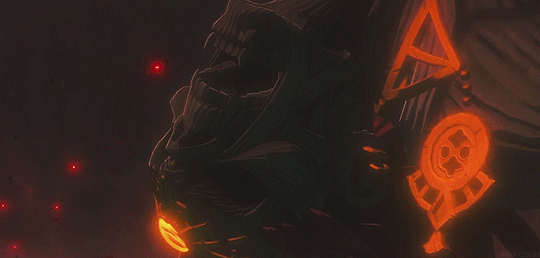
TEARS OF THE KINGDOM
For posterity’s sake: this post was made before the game was released. I’ll probably update my thoughts on a separate thing later on.
I don’t think gerudos allying with the hylians and burying their own legends about Ganondorf as deeply underground as they can until it blows up in their face is a bad setup at all. It’s actually pretty juicy, and there’s a ton of fascinating stuff that could happen here –even some involving gerudos taking a firm stand against him while still reconnecting with their past and the choices they made once. This is my hope with the title of the game: Tears of the Kingdoms. Let’s examine them all, account for the damage, and decide how we move forward from there with the full knowledge of where we come from.
What I am afraid of (and I already made posts about that) is the scenario where gerudos rallying against Ganondorf, which I expect will forcefully try to take back his place as their king, is used for cheap feminist points that completely fail to examine, well. Everything mentioned above. Where reality bends itself out of the way of the Goddesses, and hylians’ responsibility in any of this mess, so that everything bad is 100% Ganon’s fault and so he must be cast aside and torn away from the Cool Gerudo Girls and this is 100% justified and deserved because we are Independent Women Who Take No Shit from No Men (unless they are the king of Hyrule or any random hylian they wish to marry apparently).
I’ll say this here because it’s been burning my mouth every time I see discourse about Ganondorf and the gerudo: gerudos declared him as their king. To make a really bad comparison that I dislike: he didn’t run around to assemble girls and make a cult around himself, he was born with the cult already formed around him (and it’s not a cult, it’s just a different mode of governance –hylians also revere the Royal Family like gods, don’t they?). This heavily changes the dynamics at play. Not to remove any agency from him to do a little invasion about it, but chances are the ancestors to BotW’s gerudos fully expected him to behave in this way, at least to a degree –in OoT you see very plainly that they value physical prowess, feats of thievery, witchcraft and general violence. It’s more complicated than him being a Bad and making the poor helpless women go along with the plan uwu –even taking the brainwashing into account, AND Koume and Kotake counting as gerudos too, even if they might not be not fully innocent in shaping the culture and the man himself. If manipulation and forced servitude is the explanation given, I’ll be genuinely mad –because, once more, all the nuance and messiness would be flattened for the sake of making Ganondorf Bad and the gerudo Good (= on hylians’ side).
It bears to be said: I think feminism stances that require, not to criticize (which is fair), but to fully dehumanize and bestialize men of color to make any sense are uhhh bad, and it's worth questionning who they end up serving in the end.
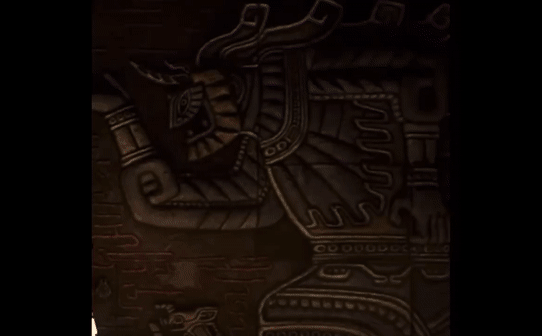
The flip side of this would be to make Ganondorf a poor little meow meow that was secretly controlled by the evil Demise all along, and... I’ll be real. I really don’t think it solves our problem at all. It might even make it worse.
My problem with how gerudos have been handled thus far, being mostly connected to how they behave in relation to hylians Good, is that they’ve been systematically defanged not to threaten the status quo as much as they used to. I think it’s pretty clear why I’m not a fan of Ganondorf being a mere victim of cosmic circumstances; I have a post that goes more in depth about this, but to simplify: my man has legitimate grievances. To make him a mere puppet to Evil Incarnate would, to me, be just another attempt to erase the despotism of the Goddesses, the unjust hierarchy of the world, what hylians have historically done to the races they were in conflict with (looking at the Yiga for the most recent example…)
I’m not saying his fight is clean or even legitimate, that he isn't driven by his own sense of self-importance above anything else, or that he should win (he has no plan beyond domination and victory, that's not a future). But I think there’s something really important about having someone being willing to fully consume himself and everything around him for the simple fact that someone should resist the order of the world. Even if that makes him a heartless, cruel, and egomaniac demon-pig. Even if there’s no Hyrule left to rule. Even if his own people despise him, or are long gone and forgotten.
Is it a little heart-wrenching? Uhh yes to me yes most definitively. This is why Wind Waker Ganondorf hits so hard, and remains (I think) his favorite entry in the series so far. But… I still find this fate of eternal resistance more resonant and empowered, and far less grim, than if Hyrule’s lore absorbs his hatred and rage, gives it to another entity that would be Badder (= more opposed to hylians and the goddesses), and scrubs it off anything icky and uncomfortable, rendering it completely domesticated and non-threatening to hylian domination; rubbed of his skin color, of his complexity, of his own emotions, even made... kind of sexy now, in the same way his sisters have been made before him? I am very, very afraid of him being turned from furious and an unapologetic subject in his own legend to a "redeemed" (according to whom??) and palatable object in somebody else’s, that you now end up having to… save from himself.
Again, I want to trust that Tears of the Kingdom can walk that line and preserve everything sharp and contrasting and profound and thrilling about this fascinating setup. I don’t expect a philosophy course, this is a game for children –but it doesn’t mean Nintendo didn’t do an astounding job with similar setups in the past. Again, I’ll invoke the Wind Waker conflict, but Twilight Princess did a lot of great things as well (Zant’s speech, if you can get past the weird stretches and stumping and NNHYAAAs, is pretty fantastic) –and the subtle writing of Majora’s Mask is also proof enough this series can be complex without being impermeable.
So this is where my hope lies. Not really with BotW’s writing, which, I’m sorry to say, but I found to be below what the series has done in the past (I have no problem with the setup and how the story is explored, I think it was a great idea, but wasn’t ever sold on the actual writing the way I may have been with previous titles –it felt… very tropey to me overall, with a couple of highlights). But Nintendo has shown to know how to write compelling stories for children that know where to sprinkle its darkness and how to preserve its hope, and this is this side I’m relying on for this delicate storyline moving forward.
And now? Now… I suppose we wait and see.
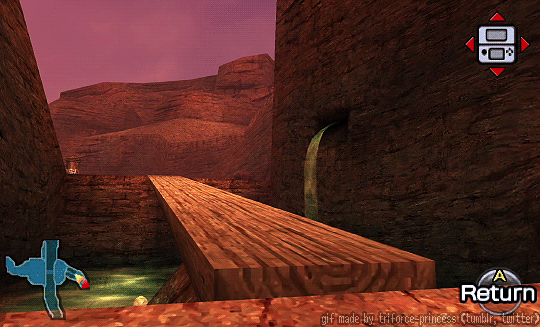
(thank you for reading my impossibly long essay what the actual hell, at least I got it all out of my system, see you in part 2 for when TotK comes out I suppose aaa)
#gerudos#gerudo#ganondorf#tloz#totk#botw#breath of the wild#ocarina of time#twilight princess#wind waker#ww#tp#meta#hylian critical#zelda meta#thoughts#this took SO LONG#but at least it's DONE#let me know if I say stupid things!!#I probably do!!
881 notes
·
View notes
Text
Civilized Or Not
So there’s some common Zelda fanon I wanna talk about, relating to civilization tropes I think some of y’all haven’t really thought about in detail before, and that’s Hyrule (Zelda 1 &2 Link), Wild (BOTW mostly), and Ravio (LbW).
I’m using the Linked Universe names, because that’s where most of it comes up, because these things happen most often where you can contrast the boys with each other. This is often done, quick and dirty, by people assigning “roles” to each without much thought. Ravio’s unfortunately tends to be extremely pervasive outside LU spaces, too.
But, in brief, there is a trend for people to craft these characters in a framework of innocent vs savagery vs trickery that can have some really unfortunate implications I’m not sure many are even aware of. Hopefully I can explain better where these ideas come from, why they’re so easy and appealing, and why we should try to avoid repeating them for more than just the sake of “easy” but also to stop repeating some really nasty historical tropes.
I would start from what’s probably the simplest one to address: the tendency towards a “feral” personification of Wild. This tends to come from two places: Wild’s amnesia, and the collapse of society around him and his lost place in it.
Now, brain damage is complicated. You can lose a range of things to any given injury because of the way information is encoded differently and in different places. You can lose memory and/or skills and/or coordination and/or balance, etc, because it all depends on what got damaged. But in-game a lot of stuff suggests that Link retains things like speech, reading/writing, coordination, and martial skills. None of the people who knew Link prior to his injury suggest he seems changed in any way not attributed to stress and anxiety...
And, more importantly, real people suffer memory loss just like that in the real world. Treating him like he’s become “feral” due to memory loss is cruel to actual people living with brain damage today, and if you go there you should have a good reason for it.
Social collapse is a wide-spread theme in basically every Zelda game. The threat that the Big Bad poses is almost always the destruction of society as it exists: Malladus literally vanishes the infrastructure of New Hyrule in Spirit Tracks; the Twilight turns people into spirits living lives they don’t realize are questionably real in Twilight Princess; Veran freezes the passage of time to force people to work forever in Oracle of Ages. King Daphnes and Ganondorf under the sea vie over the fate of the world above in Wind Waker: keep what’s been made, or start all over again?
In modern culture, people tell a lot of stories about the fragility of civilization and what happens in its absence. You get the range from Lord of the Flies, in which children wrecked on an island attempt (and fail) to recreate civilization on their own, Kipling’s “The Jungle Book” in which Mowgli is treated as reckless and innocent, and a much more obscure piece from the 18th century “Paul et Virginie” (and likely many more I don’t know offhand.) Essentially all of them play with the question of how do people become civilized, and what happens when they do? In Lord of the Flies, the children were civilized and failed to maintain it; in the Jungle Book, the boy wasn’t civilized and innocently interacts with it. In Paul et Virginie, the children were (relatively) uncivilized on the (French colonized) Mauritius, raised by their mothers but when the girl was sent away, she becomes civilized and dies tragically to preserve it.
The two Links most removed from civilization are Hyrule and Wild. Wild “lost” civilization, losing both his memories of it and the structure of it. Making him feral, without manners, and without a place to belong is that kind of Lord of the Flies savagery mixed with Mowgli’s innocent playfulness: there isn’t a structure to adhere to, so he’s a savage. Whereas Hyrule is more like the Paul eg Virginie side: innocent of civilization, he remains pure and sweet and kind, unable to conceive of big concepts like evil or money or so on. Neither position permits them to interact with the civilization that is right there in front of them! Wild can buy a house; he has people who know and care for him. He has social connections and social rights. The world exists, but the fandom does not seem to want him to interact with it in favour of remaining “wild.” In Zelda 2 – a game explicitly set within a decade of Zelda 1 – there are whole towns with trade and a castle and massive structures with on-going life in them... but very few fans seem to ever reach into that story or relate it back to the first. Hyrule, the character, does not exist within Hyrule, the country.
Strangely, Wind Waker does not fall prey to this, I think because the structures are presented as fait accompli: Link wakes up with his grandmother and his sister, he has a defined home, and a society in which you spend the entire game forced to engage with. Zelda 1 & 2 were not sophisticated enough to waste resources on going as in depth in social terms (although such interactions absolutely exist in Zelda 2!) and BOTW leaves such interactions as optional: you can survive the game with minimal social contact... but it’s a choice to play with it that way, not the default. The ways in which this edges onto the noble savage trope, in which “uncivilized” tribes are either innocent or brutish (rather than complex social systems in their own right) is fairly obvious.
There is one other character in Zelda who gets treated to the question of whether he is an innocent, free of civilization and all its rigour... or something else. Ravio, coming from the devastated world of Lorule, can often wind up slotted into the scared, innocent child trope and unfortunately that’s the better position people frequently take. The worse one evokes the Merchant of Venice: the deceitful, Jewish merchant who values money over people’s lives.
Lorule (and Nintedo’s approach towards their humanoid Zelda villains in general) is near-eastern-coded in many ways, down to the fact that Yuga’s outfit is the spitting image of Ottoman dress. Yuga being a depraved bisexual (a common historical trope about Muslim men towards Christian men and boys), and Hilda being deceitful and conspiring against everyone she was once allied to are a backdrop to the ways in which Ravio is a greedy coward. He’s not an evil character in the game; the mechanic of penalizing death without being too severe is interesting and works well! But that doesn’t take away the stereotype, just like it’s not okay Nabooru is pretty explicitly predatory towards child Link in Ocarina of Time, too.
Arab and Jewish stereotypes often converge, because both people's originate from the same region, and both are hostile "Others" to Christian Europe and Nintendo doesn’t have a great track record of their near-Eastern coding in Zelda. It crosses the whole gamut from harem and amazon tropes with the Gerudo to breath-takingly anti-semitic or anti-black (Ganondorf being green, eg. non-human, in various incarnations), all packaged neatly in the ideal of medieval fantasy Europe. The scale would be impressive if it wasn’t so damn awful, but we can at least stop repeating it in our fanworks.
Wild doesn’t have to be feral to be a playful little shit; Hyrule doesn’t have to be pure and innocent to be kind. Ravio doesn’t need to be innocent or scheming, and he shouldn’t place money over Link’s well-being (If you chose to respawn at home, he is consistently only ever concerned for Link! Once you buy the items outright, he promises he'll still be there to take care of you.)
Do better. It’s more interesting that way, and I want to see that variety grow!
[If any of y'all would like me to dig up better sources on any point, I can do so but I didn't want to bog this post down further. I have largely left the anti-arab stuff alone because it's not the biggest issue with Ravio's fanon presence, which is the focus here.]
#Zelda Meta#Linked Universe#Ravio#LU Wild#LU Hyrule#antisemitism in media#noble savage tropes#bad tropes#Unfortunate implications#LOZ meta#LU meta#Long post#like 1200 words#I'm having a week okay#brain damage#mental illness
106 notes
·
View notes
Text
Insane to me that in BOTW you are asked to question the validity of tradition and the powers that govern through it. Whether relying solely on beliefs of ancestors from thousands of years ago should still be upheld despite overwhelming proof that it's not working. Through Princess Zelda you see just how constricting and cruel tradition can be when one doesn't fit the mold of its requirements and how it can utterly destroy someone's sense of value to themselves and to the world around them. It asks "How many like her have come before? How many Zeldas who, by the misfortune of being born in a peaceful era, never got the same opportunity for freedom in the same way that this Zelda does? Ironic that the Calamity became the very thing that freed Zelda from the confines of Tradition."
And then ToTK turns around, looks you in the eyes and says "Actually tradition is very Important and Good and The Only Thing that stands in the way of Pure Evil. Go on this quest centered around praising ancestors past and mimic their tragically lost influence to Bring Peace and Happiness to everyone!! Also Zelda's character growth involves becoming the picture perfect Ideal of the very thing that made the majority of her life utterly miserable because now she's Perfect and isnt that divine? Definitely don't think about the tragic implications that has lore wise since it tells you that no matter how unique you may be, you will eventually become exactly like the rest from ages past. Anyways go kill a Lynel!!"
#zelda criticism#zelda totk#tears of the kingdom#breath of the wild#botw#zelda botw#princess zelda#totk spoilers#totk critical#totk criticism#botw critical#botw criticism#the legend of zelda#zelda meta#totk meta#loz totk#loz botw#loz
69 notes
·
View notes
Text
What I love about Wind Waker (among endless other things) is how Ganondorf has an excellent narrative foil not only in Daphnes, but in Link as well.
One is a boy from a backwaters island in a homespun green tunic crafted by his grandma. Other is a man from the desert with his mothers’ names inscribed on his twin blades. Both are characterized by their aching homesickness - but their homes are unhospitable to human life, and their destiny led them both to a point that, if they were to return, they would never belong anymore. And yet, they both are ready to defend it with their lives.
277 notes
·
View notes
Text
I will now yell about Fi and Ghirahim as symbols of their respective creators, please stand by:

So, the biggest slap addition the lore that Skyward Sword gave us was (Her Grace) Hylia and (the Bringer of) Demise. Entities who, regardless of confusing localisation choices, exist as two sides of the same coin and are locked into a mutual karmic cycle.
They reflect each other like a mirror, and also represent an antithesis of each other, seemingly existing as consequence to one other. They were presented as the penultimate deities of the physical and metaphysical realms of their world since the advent of its creation by the departed Golden Goddesses; twinned yet opposite, and each both inevitable and necessary.
Shadow; Light. Chaos; Order. Indulgence; Restraint. Upheaval; Stability. Primordial; Designed. Spite; Grace. Hidden; Seen.
Ghirahim; Fi.
It goes right down to the blades that Demise and Hylia would level at one another. The spirits of each are a representative of the principles and philosophy championed by their creators.
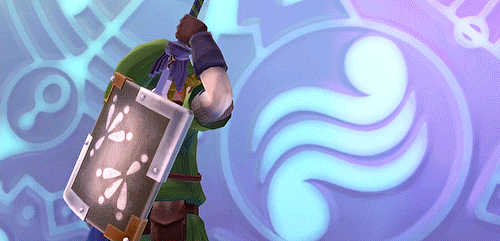
Now, the closer you get to the works and relics of the Gods/Gods Tribe in Zelda, the more you see divine constructs that blur the line of spiritual magic and advanced technology, and are ostensibly both. This was a direction that really bloomed in Skyward Sword, taking a running start on it that games hereafter have followed. The caveat is that only certain special people chosen by Gods or otherwise given permission to use this kind of Magitech can interact with it or produce things like it (either at all, or without punishment).
Even the Sheikah, who have closely served the intentions of the Gods/Spirits of Light (Hylia and her aligned) all throughout history, make the mistake of getting too comfortable in their inspiration and cross the line into imitations. Despite the successful utilisation of, and later recovery of, certain Sheikah Tech such as the Divine Beasts to positive effect, the tragedy of both the Sheikah's Divide and the Calamity's hijacking of Hyrulean defence systems is still played as a cautionary tale of hubris and knowing one's place in the natural order of things.
The Sheikah were effectively making unauthorised knockoffs of Divine Magitech and it bit them on the arse.
Can't have shit in Hyrule.
Pretty much every significantly advanced tribe in Zelda has a stated closeness to 'the Gods'. Either by being adjacent to or descended from deities and spirits collectively known as the Gods (specifically the Gods Tribe in JP), they are still distinctly subordinate to and separated from entities such as Hylia and the three Golden Goddesses.
Confirmed to be included in this special grouping are the Zonai and the Oocca, for instance. Speculatively, the Wind Tribe are an example of people who ascended (with permission or worthiness) from the surface-- they are an arguably Gerudo adjacent tribe who may even be precursors to the Zonai or related to the Twili.
The Picori, at the very least those in their native realm, also certainly count as part of this grouping. Though it could be argued whether those descent Minish living on the surface still do.
The Sheikah, it should be noted, have never gained entry to this Gods club. Despite their proximity in worship and service to Hylia, historically, they've also done some pretty shady things-- like the Shadow Temple and the general murder and espionage stuff -- that may have otherwise excluded them from ascending like the Wind Tribe did. They walk a grey line, and they have a duty in the eyes of the Powers That Be that apparently prefer they stay put.
Not Turtle-y enough for the Turtle Club.
Another example of this Icarus flying too close to the Sun type cautionary tale, and a far more egregious offender in the eyes of the Gods Tribe, are the 'Interlopers' who would eventually become the Twili. They were a tribe of people that, while squabbling with others, tried to take dominion of Hyrule (referred to itself as the Sacred Realm/Holy Land in TP) with powerful magic that more or less gave them a winning advantage. Specifically, the Crystal Stone of Shadow (the Fused Shadow) which greatly amplified their magical power.
Banished by the Spirits of the Light whole cloth into an underworld (lit. A Realm of the Dead) that we also know as the Twilight Realm, they have been shunned from the land they tried to conquer and transformed by shadow so much, they're now allergic to the light (without sufficient mystical power to bolster themselves).

Basically, the intended message is this: any earthly people who have advanced themselves without approval by the Gods Tribe-- especially by using Divine Constructs as inspiration or means-- have therefore disrupted the order of things, and stacked the deck too much in their own favour. Even if the intent was primarily a fixation on preserving Hylia's bloodline, and by extension her sacred land, it is still possible to elevate oneself above your contemporaries (especially the capacities of the Royal Family line in Hyrule) in such a way that you impose too much independent influence upon the the natural world.
No longer following 'the way of the Gods' (the Gods Tribe law) or respecting the order of things (ala Shintoist inspiration), you are labelled a disruption to harmony and peace, and therefore seen as corrupted and pollutive, and generally negative in your impact. You will then be chased off, at the very least, unless you renege-- for fear that you will bring in demonic influences or be used by them. This has canonically happened to both the Gerudo and the Sheikah, now.
But you know who Magic Constructs on par with the Gods Tribe, except it's more eldritch and organic-looking and primordial in form? It's the other club, the one that the disenfranchised Sheikah went and banged on the door of, hoping to be let in if they started wearing cool red and black outfits and changed their name and stopped worshipping Hylia.
Yeah. It's the Demon Tribe-- who are pretty much just the inverse reflection of the Gods Tribe and its set up. Their Magitech equivalents, and what they can do, only serve to further cement this.
Specifically, if you could suggest that the Gods Tribe's main objective is maintaining a status quo of shared prosperity that provides an ordered and peaceful existence through conformity and tradition, the Demon tribe is an ever churning well of opportunity where winner takes all. It is a hierarchy built on brutal meritocracy, honed by constant challenges and hard won continuation-- survival and status fought for and maintained by individualistic influence and innovation.
Many various little bastards exist in the Demon Tribe. Bosses in charge of sub-tribes of monsters are commonly seen, but they have their minor Deities ad Spirits, too. The head honchos are called Demon Kings (plural, because it doesn't describe a single position, but rather just very powerful Demons who have clout). Demise is both a Demon King, namely the most powerful one, and also the 'Chief' of the Demon Tribe; just as, in this case, Hylia could be considered the 'Chief' of the Gods Tribe. So, Demon God-King, really.
While Demise is incapacitated by Hylia's seal, his role as the Chief of the Demon Tribe is actually the position that Ghirahim fills in for as his (literal) right hand man-- the very extension of his arm, as his blade.
Both the Master Sword (Fi) and Ghirahim himself are, perhaps, some of the most advanced forms of this sort of Magitech we've actually ever seen.

Ghirahim goes above and beyond in his role, even going so far as to cultivate his full persona as a Demon in his own right in order to maintain his authority as the effective Regent while the big boy is incapacitated. He disguises his true form and nature, and with a surprising level of autonomy and self-transformation for what he is, sets about attending his duties with great devotion.
He seems to have an incredibly intuitive and flexible mode of operation. His sentience is full of creativity, emotionality, and genuine potential that he has the capacity to explore and shape with great freedom, for the construct that he is.
He is flamboyant and attention grabbing, highly expressive. He entertains great personal indulgence, even going so far as to toy with Link in a manner that borders on vicious training for a while. Though in part due to his undeniable sadism, Ghirahim almost can't help himself but to continue to test and push against the potential as a swordsman that the Hero has, inadvertently cultivating its growth.
This depth of identity and adaption he's capable of was either an intentional part of his design, or specifically not prevented by it-- both of which stand to represent something of Demise and Demonkind. The lengths to which Ghirahim is allowed to wield himself when not in his creator's hand is remarkable and, though he is shown to be unable to override actual commands from his master, it stands in an interesting contrast to Fi.
Where Ghirahim is able to radically redefine his own presentation and function to best suit his Master's needs in a way that mimics the organic, Fi's evolution is far more linear and streamlined, never really deviating from systematic updates. Though the sword itself is subject to physical restorations, Fi's personal appearance is unchanged and reflective of her true shape, indicating that her tempering in the Sacred Flames is either a slow return to previous form or a pre-programmed and permanent upgrade set into motion by Hylia. It is also an evolution that is entirely dependant upon the actions of others, largely lacking the individual agency and flexibility that Ghirahim possesses.
Not to suggest that Fi is any less devoted to her purpose, however.
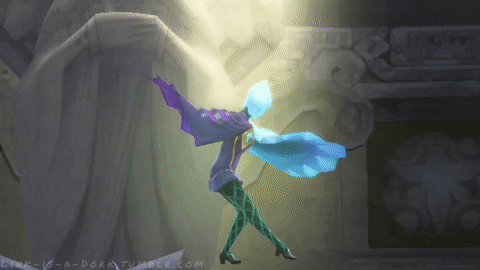
She is, quite unlike Ghirahim's aspect of individual advancement, wholly geared toward a model of mutual enhancement with a partner. She is built with a singular and clear objective in mind, perfectly designed to suit the needs of the one wielding her as a supplement to their ability, rather than an autonomous servant. She defers entirely to her Master's decisions at all times, though does make informed suggestions, and does not appear to be able to relocate the physical sword on her own. Many of her abilities are things that must be directly requested of her.
Even when she is given to performance, such as her singing or her ballet, these are seemingly dispassionate affairs that are precisely executed, preprogramed displays for Link's benefit. Absolutely nothing, not even particular inflections of emotionality, must risk the distortion of her relayed messages and guidance to Link-- these displays may also be something analogous to morale boosting rewards or a really weird form of reverence to the musically inclined Hylia. Either way, Fi is highly logical and presents herself foremost as an instrument and a tool.
She does not indulge in a persona or otherwise engage in anything not directly tied to her assigned mission-- she does not get distracted or indulge personal whims as Ghirahim does. But critically, a large part of her design is geared towards an awareness of her surroundings. Fi has a visible consciousness for the living things around her at all times, contrasting to Ghirahim's seeming negligence of them and open disdain.
Fi's orderly efficiency and lack of cultivated personality to detract from her purpose make the fact of her construction obvious. Unlike Ghirahim, her true nature and her task is almost painfully undisguised. She exists in a simple sincerity, almost austere, seemingly unwilling or unable to seek function beyond her designation without being updated by another. However, her concentrated application seems to achieve concentrated results, strengthening both herself and her wielder in a near impenetrable mutual reinforcement.
It is perhaps of no coincidence that, despite Fi's seeming inflexibility and clinical pragmatism, she also expresses something of a fondness for Link at the end-- in many ways, mirroring her Divine creator. She does this very robotically, by correlating her collected data time spent together and their completed task with what she's observed of human happiness.
Skyward Sword seems to argue that Ghirahim's main flaw is spreading himself too thin, or trying to be so many other things, that he falls short as a sword in the end. It suggests that his sin, like others in the franchise, is getting too big for his boots scabbard and letting his pride become his downfall. His individualism gets presented with a great cost, as he has only enhanced himself in ways that seemingly do not apply when he returns to his primary function as a sword. The emotionality he has, such as the frustration and cockiness and bloodlust he indulges, are also shown to lower his successes-- reducing the sense of his efficiency and precision beside the ever level, measured Fi.
When he returns to Demise's hand, Ghirahim is already weakened and spent. Despite all he's done for his Master's revival, Demise is left to fight with a paling version of the blade that once fatally wounded Hylia-- not unlike a Master Sword in need of restoration to its full power.
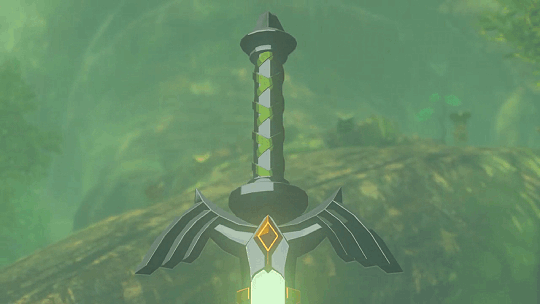
There's a legend regarding Gorō Nyūdō Masamune, widely regarded as the greatest swordsmith in Japanese history, and Sengo Muramasa, who is famously known for creating unique and terrifically sharp blades that are considered cursed.
It starts when Muramasa challenges Masamune to see who can make a finer sword. When the work is done, they go down to a river, and place the blades in the water with the cutting edge towards the current.
Muramasa's sword, which he named Ten Thousand Winter Nights, cuts everything that floats its way-- leaves, fish, even the wind that happened across it. It is so sharp that nothing escapes unscathed.
Masamune's sword, named Tender Hands, is placed in the river and cuts the leaves that go by so seamlessly, they reform on the other side. Fish swim up to it and seem to be repelled by its aura, avoiding death. The wind kisses the blade gently with a pleasant whistle.
Muramasa isn't impressed by this. He thinks the blade is useless, barely cutting anything at all, and starts to remark on the lack of skill. Masamune smiles at the criticism, but merely compliments that Muramasa's sword is indeed quite sharp.
A monk who had watched all this from nearby approaches at that point, bows, and interjects with his own observations.
Though he too observes that Muramasa's sword is technically very finely made, he notes that it's a bloodthirsty, wicked blade. It cuts anything in its path indiscriminately, he says, and would just as soon cut a butterfly in half as remove somebody's head.
Masamune's sword, however, was the clear winner in the monk's opinion-- a gentle blade that did not needlessly cut that which was innocent or undeserving, tempered by grace. It is a benevolent sword, and so far finer made.
In popular culture, Muramasa's blades have held onto their violent reputation. There's a superstition that they can compel their wielder to murder. It has even been said that, once drawn, they can't be sheathed again until their thirst for blood is sated-- even if it has to drink from its own wielder.
They also had a weirdly consistent habit of maiming or killing members of the Tokugawa Shogunate, and so became an anti-Tokugawa symbol synonymous with the rebellion. So that's fun.
But Masamune was considered to be a very calm man, who was controlled and reserved and quite spiritual. Muramasa, though, was depicted as an aggressive man, who was a bit wild and kinda unpredictable. As far as the folk stories go, Muramasa is depicted as having been quite envious of Masamune. Unlike Masamune, who approached his craft as the art of achieving clean death, they say Muramasa needed to transfer his unhinged energy into his blades to keep from being overwhelmed by it himself.
Because their natures bled into the swords they created, it was believed that Masamune and Muramasa imbued them with purifying and demonic power, respectively.
Just as with Demise and Hylia and the swords that they created-- as inspired by such a legend-- the spirits inside of them represent their natures, as well.

#legend of zelda#zelda meta#zelda analysis#long post#hylia#demise#fi#ghirahim#skyward sword#sksw#zelda lore#tloz
91 notes
·
View notes
Text
Just want to put out there the interpretation of the Golden Goddesses as neutral entities.
Hylia and Demise—as subset of all creation—are implicitly both products of the Goddesses. The dynamic of opposing cosmic forces could arguably start with them. While “good and evil” are often attributed to these two, it might be more accurate to say that they represent “enthalpy and entropy.”
Of course, another creation of the Goddesses is wish-granting Sacred MacGuffin that would reflect the heart of the mortal who found it. Seems like a wild choice to make such a thing available at all… unless it was part of a larger design.
While it’s stated that the Goddesses gave Hylia the Triforce for safekeeping, perhaps it was less because Hylia was fundamentally “good” and it needed to be kept away from “evil,” so much as she was a protector of (her) people. She did what she had to do to build a succession plan after she died, but it could easily be assumed that it was the Hylians who decided to lean into it and transform Zelda's lineage into a full-on theocratic monarchy.
One interpretation of a cosmic design is that everything moves in a cycle: day/night, the moon and tides, the seasons, and—in a system where people are canonically reincarnated—life and death. Perhaps a larger cycle of creation, destruction, rebuilding, and collapse was baked in from the very beginning. After all, some classifications of forest fires can ultimately help the long term health of forests. Sometimes overgrowth can disrupt the balance of a larger ecosystem. Is the ivy that covers a tree “good” or “evil,” as it endangers the life of the tree, but benefits local pollinators, and reduces additional C02? Moral judgement is a human construct, and the narratives around morality at such an abstractly high level are going to be inaccurate (and intrinsically biased) when anchored to a perspective that cannot see the full picture; which is something that is inaccessible to people.
But fast forward several epochs. How interesting that the first person to find the Triforce (after all the Skyward Sword shenanigans) was Ganondorf. Was it because of tireless research? Luck? Total coincidence? Ocarina of Time made it difficult to tell, though the histories written from the Hylian perspective claim that he “stole” it from the dominant theocratic monarchy (which is one way to defensively interpret the event, given how much his acquisition of the Triforce could have completely undermined the authority of the Royal Family as a divinely-ordained institution).
But then in Twilight Princess, the Triforce of Power was mysteriously—likely divinely—granted to Ganondorf in his moment of need. This was no coincidence, and it speaks of his role in a greater cosmic design. He was given this power because he was meant to have it. Why? Maybe we’ll canonically learn more in TotK.
#legend of zelda#a link to the past#ocarina of time#twilight princess#ganondorf#oot ganondorf#tp ganondorf#zelda meta#zelda headcanon
189 notes
·
View notes
Text
because i am once again being kept awake by yiga clan thoughts.
do you think the splintered sheikah from 10,000 years ago that swore allegience to ganon slowly evolved into the yiga we know today, gradually phasing out blues for reds and white hair for black in a ship of theseus sense where they don’t notice how different they’ve become until too many generations have passed to notice.
or do you think it all happened overnight in an edgy makeover montage styled like a 00s coming of age movie as they dye their hair black, tack spikes onto their outfits and apply emo eyeliner over their sheikah crests until the look is complete, joan jetts playing all the while as they walk in slo mo towards hyrule castle.
#totk#totk yiga#yiga clan#tears of the kingdom#botw yiga#loz totk#legend of zelda#sheikah#yiga#zelda meta#totk meta#if you want a stronger picture for option 2 imagine the megamind eyeliner scene or spiderman 3 hair gif (sorry)#kohga: ooh i'm shaking in my custom baby sandseal leather boots#i think this is the 3rd time i've asked something dangerously 3am about the yiga clan. everything about them raises questions
54 notes
·
View notes
Text
I Ramble About Revali and Groose
i don't actually expect people to care about minor characters or side characters in any other media franchise i'm in, but with loz i tend to get annoyed with people if they clearly only care about zelda and link, and it has to do with how the games frame side characters post-fujibayashi
so revali and groose are part of a common ongoing narrative trope in zelda games of someone who's on the good guy team but is somewhat antagonistic or "mean" to link for whatever reason. you get this with mido and (somewhat) with tetra and her crew and midna. the difference between these characters and groose/revali is in why they don't like link. mido is pretty much a bully who has never liked link because he's just different from the other kids—he is an eternal child, so this makes sense —tetra is skeptical that link can actually do anything in the forsaken fortress initially, and midna wants to use link (and to extent, the legend/narrative itself) for her own ends.
groose and revali don't like link because he's the main character, and they're right. groose clearly despises link because while he's exceptionally lazy and disinterested, everyone likes link, and the youth succeeds even when he doesn't try. later on, this turns into frustration that link is part of some grand scheme and he's...just not. he is a secondary character in-universe, and according to impa the best thing he can do is help on the sidelines. he is a big help, and a very lovable character in his own right, but he's fundamentally trapped in his own narrative.
revali is VERY similar to him in this regard, except he's aware that he's a supporting character (a champion) from the start, and hates link specifically for it. unlike groose, he never really does anything about it besides be somewhat snide, and eventually admits that link might be an okay hero when the rito champion is dead and can't do anything besides fire a big laser anyway. link has been groomed since he was a child to become a knight: his father's a knight, he pulled the master sword when he was twelve, iirc he might have joined the royal guard at an extremely young age, and everyone seems to have a great deal of respect towards him. revali is an extremely skilled archer and pushes himself to the limit, but he wasn't born into it or led down that path like link, so he has to play second fiddle.
now, I don't think characters being side characters is bad. I don't think revali or groose even being side characters is bad. but I certainly don't like how it frames their desire to be more than that as...well, bad. it really reinforces my reading of post-skyward sword games as correct; characters are expected to know their place in the narrative and not strive for more or try to break out of their little boxes, and if they do, they're villainized or it's treated like a character flaw. I don't think they were necessarily right to resent link for something that's ultimately out of his control, but what else are they gonna do?
but, according to the narrative, the only thing they can do is help those chosen by the gods, those chosen to lead, as they were chosen to bend to their will. they are cosmically unimportant, and they will never be worth paying attention to. the reason i tend to prefer people who actually look at characters that aren't link and zelda and try to examine them is because they're kind of going against the narrative itself, which really wants to push the idea that only zelda and link are important, ganon is just there to be an adversary and doesn't have any real grievances, and the only thing that matters is keeping hyrule and hylian supremacy intact.
18 notes
·
View notes
Text
Minish Cap takes place Before the Tears of The Kingdom flash backs.
My proof? The wind tribe of Minish Cap.

Their story is eerily similar to what we learn of the Zonai’s:
A tribe of people who master a rare magic that allowed them to leave the ruins of their old home behind and ascend into a palace in the sky.
For the Zonai’s it was the technological advancements using zonite ore, for the Wind Tribe it was a mastery over wind and cloud magic.
And the other major difference? The zonai are clearly a race of dragon people, while the wind tribe all appear to be the same as hylians, but all with red hair. Jut like the Gerudo.
Now, the Gerudo are obviously very different from the Wind Tribe in allot of ways. Most obviously is the extreme rarity of male births among the Gerudo people. There’s also the darker complexions and the cultural difference of the Gerudo being a warrior people, while the Wind Tribe are stubbornly peaceful to the point of leaving hyrule to avoid conflict.
And yet, the Gerudo are notably absent in Minish Cap just as they were in the previous Skyward Sword.
So my my theory is that the Wind Tribe unwillingly became the Gerudo.
It begins gradually, with male births becoming less and less common, until a midwife’s take notice and bring attention to the issue. Try as they might, nothing seems to stop this strange phenomenon.
It’s possible they might have begun to struggle in other ways around this time too, whether it be a scarcity of resources, or the weakening of their own magic over wind.
The people become faced with the choice of either allowing they people to spiral into destruction, or break their secrecy and reconnect with the world below.
But, unlike the Zonai when they returned to hyrule, they were not seen as powerful gods bestowing gifts, but struggling refuges in need of aid. And so they were given just enough to survive, and when they’re palace above finally crumbled, the only lands available to them were the barren deserts.
There the centuries of adapting to their environment results in their change of appearance and culture. This injustice would also change a people, from peaceful isolationist far above any harm to a fiercely defensive isolationist distrustful of others.
It’s also interesting to see how there secrecy of their people from outsiders evolved into a ban against men who are now considered the outsiders.
Also, the Wind Tribe having been treated this way would beautifully explain the animosity between the Gerudo and the Zonai who were welcomed and given the right to rule hyrule. Animosity that the ambitious king Ganondorf happily took advantage of to rally his people to war.
It was in this moment that I remembered that Rauru is canonly the first king of Hyrule and thus must predate the Minish Cap royalty. But I got this far and the Rito somehow already weirdly exist this early so Fuck It! I was so proud of this!!
Anyway!! We’ll just pretend that the monarchy fell out of fashion a century or two after Minish Cap but the hyrule family kept power as souly religions leaders.
Back to my point. My final bit of proof to my theory are the Twinrova sisters Kotake and Koume, the elderly sisters who raised Ganondorf Dragmire of Ocarina of Time.

If you look behind TotK Ganondorf durring the thrown room memory, you will see two identical Gerudo wearing a teal and crimson skirt respectively. I believe these two to be the younger selves of the twins. Standing right behind Ganon as his top supporters and perhaps his sorcery protégés.

These two are confirmed to be over 400 years by the time of Ocarina of Time, so it’s no surprise if they are the same woman as seen in the memory. Plus this gives Ganondorf Dragmire a new spin, having been purposely raised to fill the shoes of TotK’s Ganon.
But yeah! That’s my rant. Rauru being the confirmed first king kinda takes some of the air out of its tires, but also that could start a convo on conquering and imperialism. Like say hyrule did have rulers that came before but due to it being long ago and so ‘primitive’ compared to the zonai, they weren’t counted.
#tears of the kingdom#legend of zelda#minish cap#ocarina of time#Gerudo#ganondrof#Ganon#twinova#zelda meta#loz rauru#Rauru#my babbling#tears of the kindom spoilers
49 notes
·
View notes
Text
Just something interesting about the differences between TOTK Ganondorf stealing the gemstone and OOT Ganonforf stealing the triforce, because people have been saying it's the same thing just in a different shape...
Except what's interesting about the Triforce is that Ganondorf doesn't "steal" it, exactly, he earns it. Because lets face it the Three Goddesses are kinda amoral, they grant gifts to those they deem worthy but not out of a desire to "save" Hyrule. Ganondorf gets the Triforce of Power because Din chooses him by how far he goes to acheive it, while Nayru chooses Zelda and Farore chooses Link. But the goddesses won't stop the other pieces from being "taken" if one goes as far to reunite them and gain all three, as what happens in Wind Waker. All three timelines of this Ganondorf keep their Triforce, even after having been defeated or sealed. It's only lost either when Din chooses to take it back, possibly because she doesn't deem Ganondorf worthy anymore, in Twilight Princess, or Link is able to take it like in A Link to the Past or the first Zelda (how Ganondorf got it back between those Idk, I can't deal with the timeline anymore).
Anyway, compare that Sonia's stone which he takes after murdering her, while it does greatly empower him, it's not something that's been divinely gifted like the Triforce. It's actually rather fragile in comparison. The Triforce embeds itself in your soul, as it were, hence why even when the sages tried to execute him in TP the power was still gifted to him by Din to escape. The gemstone however can be shattered by a weapon or just handed at random to any person who touches it. It's much more your typical fantasy mcguffen where it's like "finders keepers". The goddesses no longer play a part in what seemed to be a long game.
In fact there doesn't seem to be any reference to the three goddesses in these new games, only Hylia. And yet we also know these are supposed to take place at the end of the timeline, so far after all the other games.
The only signs of the Triforce we see are on some markings, including the Zonai clothes. So my theory is the Zonai were able to harness the magic of the Triforce and the old gods into their technology, but the goddesses don't really care about those. Part of me suspects the goddesses stopped caring about Hyrule much after Wind Waker, as Ganondorf says they abandoned them (still the creepiest moment from him, ngl).
"But Rauru was the first King of Hyrule!" Uh, yeah...I don't buy that. Not because I think Skyward Link and Zelda founded Hyrule, that's never said, they could have just lived in a small settlement down on the land, nothing big enough to be a kingdom. But also I just feel like it's the Zonai trying to rewrite history in their favour.
For example, if you were to ask someone in England who our first King was, most folk would say William the Conqueror. And this is what most of us were taught in school and that prior to him we were just warring minor kingdoms and at some point the Romans turned up for a bit. But anyone who's watched the Last Kingdom knows it was Alfred the Great who was first called "King of the Anglo Saxons" as opposed to the areas under Scandinavian rule, so some credit him with being the first "King of the English" to some degree, but it was his grandson Aethelstan who would rule over all the land that would become England - and this is all about a century before Will One comes anywhere near the country. But then he takes over and claims those old kings didn't count, he wipes the slate clean despite the land he's King of having existed for centuries, and I suspect Rauru did similar. Don't get me wrong, I think Rauru is a good guy, but Ganondorf rightly calls him out for his arrogance and being a conquerer, and I think a huge part of Ganondorf launching his attacks was a fear of having the Gerudo, his people, submit to another King like the other races did.
Another point to add is that Ganondorf comments about Rauru marrying a "Hyrulean" woman, implying the land was known as Hyrule before Rauru took power. We know he also got the other races to bow to him as well. We don't know what this Hyrule was before Rauru, maybe a scatter of settlements like early England or maybe it was the newly formed land Link and Tetra find after Wind Waker, who knows. This is why I think even the events we are shown in the tears are events still happening at the end of the timeline and the next 10,000 years are all part of this new era unique to these new open world games, as opposed to a reiminagining of the events of Ocarina of Time. Because for me there's too many differences for them to be the same event, the lack of the Triforce being the main one. This is instead more of Hyrule repeating the events Demise cursed upon them back at the beginning of it all. Or it could be his curse coming to full fruition after tens of thousands of years, as Ganondorf physically resembles him by the end more than ever before. In short, this Ganondorf is not the same as in OOT, TP or Wind Waker.
I'm curious to see if the Triforce will ever make a real return in the series, but I also feel like Nintendo are enjoying not feeling obliged to use it in every Zelda (lets be honest it was a little forced and underwritten in SS).
22 notes
·
View notes
Text
The Two Kings in Tears of the Kingdom
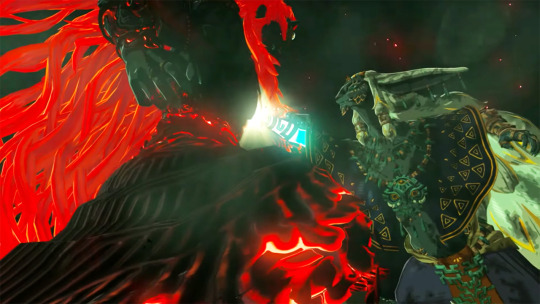
Tears of the Kingdom unearths the roots of Calamity Ganon in an ancient conflict between Rauru, the first king of Hyrule, and Ganondorf, a rival king who attempted to usurp him. In many ways, Rauru is characterized as a good king. He is noble, kind, and self-sacrificing, and he acts for the long-term benefit of the various groups of people living in Hyrule. In contrast to Rauru, the antagonist Ganondorf is an evil king who started a war because of his pride, ego, and greed.
Rauru and Ganondorf represent different styles of authority, both of which are grounded in Japanese fantasies of cultural identity. I’d argue that, in the end, neither king is fit to rule present-day Hyrule, which is why it’s appropriate that the game ends without any call to rebuild Hyrule Castle or the centralized government it symbolizes.
Rauru represents a golden age in Japanese culture when many arts now seen as “traditional” originated. This golden age is closely tied to Nintendo’s home city of Kyoto, which is associated with the culture of the imperial court before it moved to Tokyo in 1868. Because Tears of the Kingdom is a fantasy, the visual metaphors of Rauru’s character design are mixed, but his connection to a bygone golden age is tied to two symbols: the magatama jewels referred to as “secret stones,” and the kare-sansui dry landscape gardens of the Shrines of Light and the Temple of Time.
The “secret stones” that Rauru gives to the six sages have the distinctive comma shape of a magatama jewel, one of the three sacred symbols of Shinto. These three symbols are as follows: a mirror represents clarity of heart, a sword represents the power to protect the weak, and a jewel represents the materiality of divine blessings. These three objects also serve as the regalia of the Japanese emperor, whose role was historically to perform ritual prayers and thereby serve as a symbolic bridge between the world of humans and the world of gods.
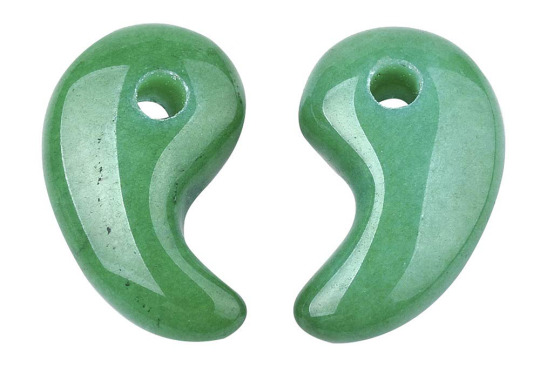
There is nothing sacrosanct about magatama jewels; at various street fairs and tourist areas throughout Japan, you can buy inexpensive polished quartz and jade magatama to attach to phone charms or friendship bracelets. As a result of its relative ubiquity, this particular shape of gem has both a historical and a pop culture association with being a magical stone bestowed by the gods on special and worthy individuals such as, most famously, the first Japanese emperor.
Along with his magatama “secret stones,” Rauru is associated with kare-sansui dry landscape gardens of the old imperial capital. Note, for instance, the front courtyard of the Temple of Time that Link visits at the beginning of the game:
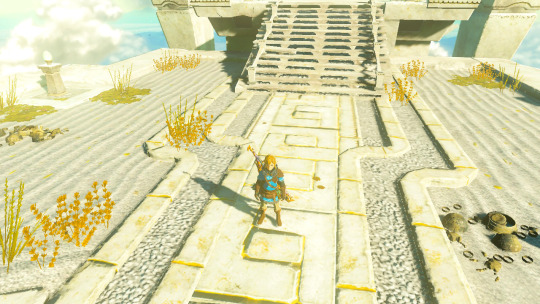
The visual motif of raked white gravel punctuated by standing rocks also appears in various permutations within the Shrines of Light established by Rauru and Sonia. To give an example, this is what the player will see if they circle back behind the entrance of the “Rauru’s Blessing” shrines:
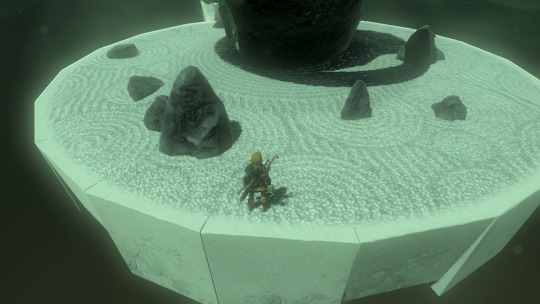
This style of dry landscape garden is frequently referred to as a “Zen garden” because of its association with large Buddhist temples in and around Kyoto. The most famous example of this style can be found at Ryōanji, in northwest Kyoto:

The philosophy of these gardens meshes well with the philosophy behind the Zelda series, which Shigeru Miyamoto has described as his attempt to create a tsuboniwa miniature garden for the player to explore. In the same way, dry landscape gardens represent a larger landscape portrayed on a much smaller scale. The rocks in the gravel are meant to represent islands on the ocean, or perhaps mountaintops rising above the clouds. Another common interpretation of these gardens – and one especially pertinent to Tears of the Kingdom – is that the rocks are the dorsal spines of a dragon swimming through the sky.
Although dry landscape gardens have strong ties to Buddhist thought, they were primarily created by wealthy lords residing in Kyoto during the fifteenth century. This was a politically unstable era, and these lords needed to make a show of their wealth and cultural legitimacy. Unlike in China, where Chan Buddhism was largely anti-establishment, Zen Buddhism was the domain of the wealthy educated elite in Japan. Many of the rocks used in Zen-style gardens were imported from China and Korea at great expense, and lords competed to secure the services of celebrity landscape designers. Even today, the late medieval culture represented by dry landscape gardens is associated with the prestige of Japan’s former imperial capital of Kyoto.
Rauru is therefore associated with nobility and a certain air of sophistication. In the original Japanese script, he is unflaggingly polite and addresses everyone – Zelda, Ganondorf, and Link alike – with the sort of “clean” language associated with people of high social standing. To put it simply, Rauru is a perfect gentleman. He is the personification of the aristocratic virtues of the “traditional Japan” of the late fifteenth century, during which the wealthy filled the capital city with gardens while countless wars ravaged the countryside.
In contrast, Ganondorf is a personification of the warrior culture of eastern Japan, especially as it was exemplified by the warlords who competed for territory outside the capital before the establishment of the Tokugawa shogunate at the beginning of the seventeenth century.

Oda Nobunaga was the most notorious of these warlords. He was infamous for being aggressive but effective, and his military prowess and ruthless tactics have been memorialized in a wealth of stories whose lineage stretches to the video games of the present day. I believe that Nobunaga (or, at least, a commonly fictionalized version of him) served as a model for Ganondorf, who seeks to take advantage of the instability of the newly established kingdom of Hyrule in order to expand his own territory.
Like Rauru, Ganondorf’s character design contains mixed visual metaphors, but I think it’s fair to say that his topknot and costume are meant to evoke a samurai who has thrown off the kimono sleeve covering his sword arm as an indication of his readiness for battle. This is a style still worn by practitioners of Japanese fencing and archery, which are common extracurricular activities in many high schools. Appropriately, Ganondorf fights with a tachi katana, a naginata spear, and the body-length longbow used in kyūdō archery – all weapons associated with the martial arts of Japan’s medieval military elite.

As if to cement his connection to Nobunaga, Ganondorf speaks in period-drama “samurai Japanese” that demonstrates neither the elegance nor the poetry of his incarnations in previous games. He seems to lack both regret and awareness of the consequences of his actions, and he is concerned primarily with hierarchy, conquest, and the thrill of battle.
As was arguably the case for Nobunaga himself, there is no endgame for Ganondorf, only scorched earth. Ganondorf has absolute faith in his own power, and he views other people only as subordinates or enemies. According to his value system, there is no merit in compromise; he simply takes it for granted that he will win.
It makes sense that the aggressively bloodthirsty Ganondorf is a villain, but it’s important to understand that Rauru is not a hero. With all his magic and culture and imperial splendor, Rauru failed to understand that the system of power he created could easily be turned against him. A nation politically defined by a central authority whose rule is justified through military conquest and the cultural chauvinism of “ancient tradition” is not sustainable, and the legacy of such a kingdom can only be tears.
This is why Hyrule Castle remains in ruins at the end of Tears of the Kingdom, and this is why the game’s central hub is a research station populated with people from all over the world. This is why Zelda doesn’t attempt to re-establish Hyrule as a kingdom, and this is why it’s so important to her to understand the reality behind the myth of the nation’s history. This is also why the grand mythology of Hyrule’s origin is far less important to the player’s experience of the game than individual acts of community building. The highlights of Tears of the Kingdom are Link’s work in facilitating a local election in Hateno, helping Lurelin recover from a disaster, and volunteering in towns facing environmental issues such as water pollution and climate change.
Both Rauru and Ganondorf are compelling in their own ways, but it’s thematically satisfying that both characters are gone at the end of the game. When Zelda meets with the regional leaders of Hyrule during the closing cutscene, they promise each other that they will work together to ensure a lasting peace that neither of the two kings made possible. The legacy of the past still affects Hyrule, but Tears of the Kingdom suggests that it’s the duty of the younger generation to understand where this legacy came from in order to avoid the mistakes of their ancestors and move forward in a more hopeful direction.
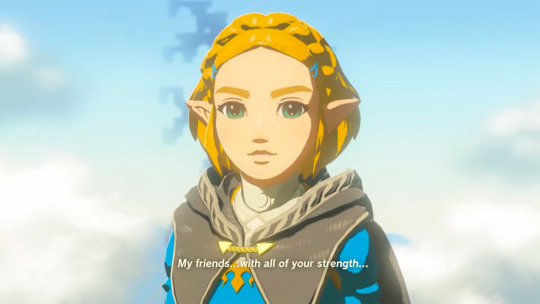
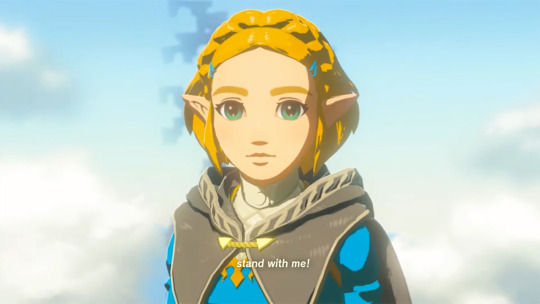
243 notes
·
View notes
Text
I think what bugs me with TotK's Ganondorf, beyond the uhhh everything here and here, is that... This version, the reintroduction of this character after 17 years of patient conversations, tries so super hard to kill any ambiguity he once possessed? I have come across many posts here, on youtube and elsewhere that focus on, just, settling down the flicker of doubt and complexity that could have been extracted as: no, he was just an evil prick all along without any depth and layers, and those who saw anything more were both wrong and manipulated.
(which could have been absolutely great if the gerudos' perspective had been centered as his first victims and how exactly that played out for them tbh --but here it just feels... I don't know, patronizing, a little bit? It's not like people hallucinated these elements, they were present in the text and resonated with people in a way that wasn't cynical at the time)
Again: obviously the fandom will do something cool with ambiguity regardless, but... I don't know, I want the media I consume to be interesting and layered also? I'm not saying TotK should not have him be evil (I think it's good that he is, I was dreading the redemption arc personally), but just... maintain the doubt? keep the conversation going? especially since it kind of condemns any further apparitions as a variation on this one-note interpretation of the character (which I think will get stale pretty fast), and also retroactively tries to reinterpret his previous iterations in the same breath. I think it's partially why I'm a little hostile to this version, even beyond its role in the narrative: Zelda is great when it reinvents its characters, but I'm not fond of sweeping statements that try to simplify the entire canon of the series for the benefit of the hylian heroes and their absolutely undisputable moral purity (and everything it implies).
I don't know, I think I'm just a little sad for what could have been.
#thoughts#totk#totk critical#totk spoilers#ganondorf#zelda meta#me grumbling#(AGAIN I know I'm sorry :((( )#I think the combo of gleeful flattening + extreme sexualization makes me go a little gngngn as well#(not that I blame anyone far from me the thought it's just... the combo of the two)#it's not a big deal at the end of the day#but I waited the whole 17 years like manually#I was but a wee teenager the last time I saw this guy#and... I don't know I don't think future zelda content wins from taking that decision?#+ writing all over past interpretations feels a little :/ to me as well#totk kind of wants to have its cake and eat it too in that regard#(again I don't count all the conversations on imperialism as ambivalence or nuance as they are not textual imo)#(like if you watch the cutscenes it's just... not that ambitious storywise)
49 notes
·
View notes
Text
If I had the terrible idea to try and muster interest in doing a, IDK event or drive for under-loved Zelda games on AO3 (based off numbers of fics per game) would y'all be interested?
This would be all ratings/all warnings, no themes about angst, fluff, or so on.
What IS the main Generic Zelda tag on Tumblr anyways, if someone knows?
The list of games (...and cartoon) per entries on AO3, for the curious:
[CDI] Zelda: The Wand of Gamelon = (4)
[CDI] Link: The Faces of Evil = (10)
The Legend of Zelda (Cartoon 1989) = 31
Cadence of Hyrule = (54)
Tri Force Heroes (63)
Oracle of Seasons = (90)
Oracle of Ages = (98)
Zelda II: AoL = (140)
Spirit Tracks = (206)
Phantom Hourglass = (215)
Zelda (1986) = (248)
Link to the Past = (316)
Link's Awakening = (344)
Minish Cap = (345)
Four Swords Adventures (466)
Link Between Worlds = (668)
Wind Waker = (867)
Age of Calamity = (1168)
Hyrule Warriors = (1185)
Four Swords = (1202)
Majora's Mask = (1242)
Skyward Sword = (2287)
Twilight Princess = (2984)
Ocarina of Time = (3114)
BOTW/TOTK = (17610)
#Legend of Zelda#Zelda games#Zelda fanfic#Zelda meta#LOZ#Adventure of Link#Tri Force Heroes#Spirit Tracks#<< Some of those with not enough love#I made a List (TM)#'& related fandoms' was like 40K so#not even on this list thanks#ETA a few I'd missed
58 notes
·
View notes
Text
There is a super subtle detail about Link's Awakening that I haven't seen pointed out by anyone.
Look at the infamous mural that reveals Koholint's true nature. Be it a screenshot from GB/GBC, richly detailed despite the limitations of the tileset system,

or an illustration from the manual, which would've been the definitive version,

or the reimagined artwork from the Switch port,

— all three depictions show the mural in a withered state, damaged by the passage of time. But the part of the tablet where the text was inscribed is consistently shown to be scratched over, in a fashion unmistakable from natural wear and tear.
At some point in time, someone — or something — visited this remote and heavily-guarded area of the island, only to deface what's probably the second most sacred item on Koholint, aside from the Windfish's Egg itself. Did it occur in some sort of nebulous and distant past (if the island even has one, and wasn't just created as-is)? Or did someone enter the Southern Face Shrine right before Link, frustrated by the Hero's advances?
One thing is certain — the damage to the mural was done by the Nightmare's forces, and it was done knowingly. After all, the monsters of the island are aware that the world they inhabit is but a dream on a lid of the sleeper's eye, and it's them who reveal that fact to Link, while the Owl and the other agents of Windfish's consciousness stay in plausible deniability.
All this story, told by a handful of strategically placed pixels. Man I love this game.
#legend of zelda#zelda meta#link's awakening#istg when i first saw the gbc rendition of the mural i had to hold my breath for a second#i didn't expect something as beautiful from this game
124 notes
·
View notes
Text
The implications on Ganondorf and his background in TotK suggest some very interesting things to me.
First of all, like. I love him. He specifically did not disappoint me. His JP audio fucks so hard. I love his design. He's glorious.
And Hyrule as an imperialistic divine hegemony is not a new concept in the slightest, obviously, the Ganondorf corner of the fandom have known and discoursed about the potential story ramifications of those themes since OoT, but Fujibayashi really went ham on it in his run. (And look. Zelda is made in Japan. Framing a divine imperial authority as a good thing narratively is pretty par for the course JP nationalism, to be really blunt. It is what it is. Grain of salt.)
But I do appreciate that it revisited some OoT plot beats even if it... really drove that point home again in retrospect
I guess new fans are in for a treat unpacking that;;;
Anyway in the BG of that, I'm interested in the particular minutia of what was happening with this Ganondorf specifically to flavour his particular brand of 'fuck you'
And a few important points that give broader context to things are these and I'll put under a cut bc spoilers obviously--
Rauru's repeated 'invitations' to join Hyrule and benefit from their protection (presumably some advanced technological access or strong magical allies as part of that promise, which I believe is probably anti-monster focused within world context) which Ganondorf as a King has very much ignored (and good for him tbh).
Clearly, he has an interest in keeping Gerudo independent.
Ganondorf is acknowledged as a Hero to his people. Not only does this heavily resonate with the very particular themes of his actual character design and both its Buddhist reference and Samurai trope homages, but like-- we're actively shown an explanation for WHY he may be considered such.
Being who he is, he's already magically inclined with a kinship to monsters. We are unapologetically shown him in command of a Molduga Army. Trained Moldugas, under his command-- and not under specifically his mystical command, either, but musically conditioned. Trained to follow sound based command cues, which makes plentiful sense given Moldugas are sound sensitive and Ganondorf usually has musical inclinations. Plus it's Zelda franchise, magic command music is also very much a thing but--
Moldugas are, at least medicinally, very important resources. On a larger scale, they're also a very present threat to desert dwellers and travellers, and from the looks of it in much larger numbers, back then.
Given the context of everything, Ganondorf was a badass even before 'he took a magic relic and fucked up the Hyrulean Royal Family' as he tends to do. Sporting as ever, he fights Link one on one as just a Gerudo, also showing once again that he does in fact have some personal code of honour when it comes to fighting worthy opponents. But it gives us a yardstick of how capable he probably was even before he nabbed the tear.
Capable enough of tangling with most big uglies in the desert, such as Moldugas, which he has at least trained and at most maybe even raised.
Exemplified Power as he ever is, I'd like to point out that in this case, he's demonstrating a flipside of what Power looks like-- benevolence, protection, guardianship. Once again, we have the pieces that indeed he is capable of that and showing that to his own people. He also flexes the Molduga Army as a show of Gerudo and its own power.
To anyone other than Rauru, who is an incredibly powerful Sage already, a Molduga Army would have absolutely won the day, I think. The reaction of the other Gerudo is pretty telling.
Ganondorf's faction were deeply shaken by the display of Rauru's power. And as a guy that's been knocking on your King's door and saying 'you should come and bend knee to me' when Gan already has the worst problem in the sands sorted out?
Very understandable.
From their perspective -- what do they need protection from, exactly, if not Hyrule itself? Their monster problem is a non-issue. From the viewpoint of Gerudo loyal to Ganondorf, everything about this looks like a pressured threat.
Which comes back around, of course, to what Ganondorf plainly lays out to Rauru when he gains the tear-- this is because Rauru tried to control him. And yes, that's Ganondorf and his pride and his nature in full tilt too. He will not be pulled beneath anyone or anything.
But that's the point about that hubris on Rauru's part, he felt superior and he underestimated both Gerudo and Ganondorf-- as a warrior and a leader, and as somebody who was likely managing things very well on his own.
But I mentioned factions. This is something that should be made clear.
Pointed ears are, canonically, associated with faithfulness to Hylia and/or the worship of Hyrulean spirits. This gets debated all the time, but that's the fact of it. We have been shown again and again that humans from outside of Hyrule have round ears (as long ears are associated with hearing the voices of the gods; ie being open to them). Exposure to Hyrulean aligned divine elements can lend pointedness to previously totally round ears. We see this happen.
It has been doubled down upon that the ancient Gerudo (such as in oot and FSA, with FSA having the introduction of the floral association in Gerudo design and OoT heavily centering mirrors in their spiritual practices) worship different deities, whether derivatives of Din or Hylia or completely different myth. The Goddess of the Sands has been confirmed as a deity that Hyrule itself views as evil and false.
I generally interpret this to mean that part of the reason boils down to this-- Hyrule's main concern is that pointed ears are living lives closer to the gods, and therefore more insulated against corruption and demonic influences. Rather fittingly, their patron's foremost spiritual antagonist tends to find his reincarnation in unprotected, non-Hyrulean tribes who are 'open' to demons.
Now that may be another layer to what Rauru means when he says protection, also. Worshipping the 'right gods' affords certain protections (and certainly supports the security of Hyrule itself).
In SkSW, by the way, there's a really cool point of questioning early human society too-- the fire temple depicts demons and monsters and snakes quite a bit, and these were built in a time when I suspect the humans were mostly a large proto-people.
Sidenote: I think Hylia's faithful went to Skyloft and generally shook out to be the Hylians we know later, where some stayed on Earth to serve Hylia's plan and became Sheikah, many more people were transformed into demons in a reverse-Batreaux situation, and some humans just scattered far and wide to avoid conflict.
Anyway that temple depicts Bokoblins making hand signs and long story short, the overall motif and meaning of that temple shows demons offering to teach things, approaching humans with a different kind of enlightenment. Whoever built that temple was very much in a state of open spiritual and mystical curiosity.
Now the takeaway there is, ultimately, the ancient Gerudo very much seem to be descended from such a sect of people. They have their own gods, and they're not part of Hyrule proper, and they have round ears because of it.
Botw departed from that very clearly, but in doing so, also erased and replaced almost all traces of the ancient Gerudo deities with new Hylian analogues.
The Seven/Eight Heroines count as Hylianised deities, and I believe the reason for this-- first suspected in botw but I feel it's weightier after totk-- is that they represent tear holders / Hylia aligned Sages in the seven group (edit: and apparently a Hero in the Eighth) such as those in the decline timeline. They are functionally the reason that the Gerudo of modern day possess long ears-- even where they are selective in what they worship, they are still worshipping Hylia aligned aspects of Divine Hyrule.
And in case this wasn't absolutely irrefutable to me beforehand, the ancient Gerudo Sage from Rauru's time is both loyal to him, and possesses pointed ears under her camel mask.
I would also point out the Hylians of Rauru's time seem to have longer ears in general, probably owing to having a Zonai King, ostensibly a Hylia aligned Deity himself.
Ganondorf's ears are rounded, of course. He clearly doesn't believe in Hyrulean worship even in lip service, and it's little wonder why.
But following another beat of OoT, that ancient sage is a very obvious Nabooru type character. And, in much the same way, that suggests that even when Ganondorf was King of the Gerudo only, there may have already been factions splitting up amongst their people based on spiritual practices.
I don't think it's beyond the pale to speculate there may have been a mixture of Gerudo at the time who had both pointed ears and round, signalling the confusion from and conflict between their spiritual leaders.
It seems likely that a schism probably existed, regardless of ears, but that schism-- and the sage who may well have been leading it-- may have been caused by people who decided respond to those calls from Rauru and join Hyrule without their King.
Which gives a lot more context to why Ganondorf would be in the mood to send a giant Molduga shaped "back off" Rauru's way, also.
I take particular note that Ganondorf's destruction intentions are faced towards Hyrule and her allies, and specifically those who oppose him in that goal. And while I concur that his whole Red Inheritance party ran hard and may well have had a decent hand in frightening the bejeezus out of the Gerudo who were previously faithful to him-- maybe even inadvertently sent some running for camp Hyrule-- it seems he considers modern day Gerudo, fully converted to pro-Hyrulean status, to be traitors.
We have no idea what happened to the Gerudo who followed him, so that's really up in the air as to how messy that may have gotten.
Even the woman who plays to summon the Molduga has pointed ears though, so I tend to lean that his camp got converted to Heroine worship (or at least those with pointed ears mostly did if the mixed ear situation was happening).
But heck, it would not be the first time some Gerudo got ran outta dodge after a King went belly up.
Food for thought.
#ganondorf#legend of zelda#ocarina of time#long post#totk#totk spoilers#botw#gerudo#zelda#zelda meta
255 notes
·
View notes